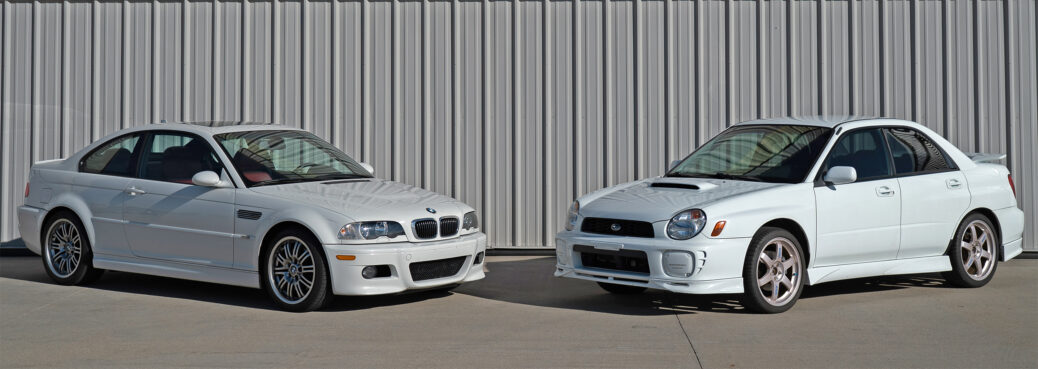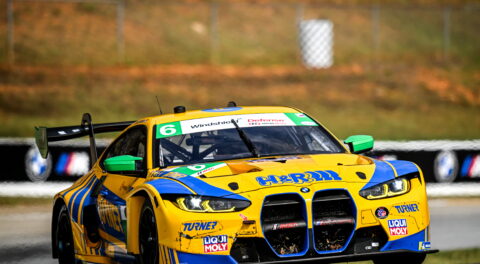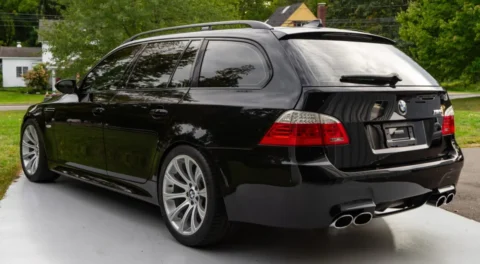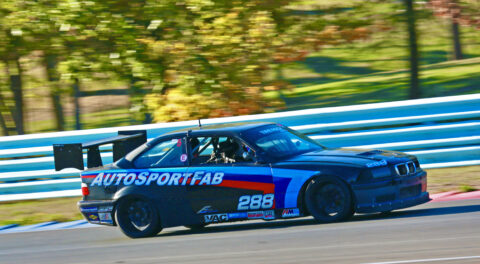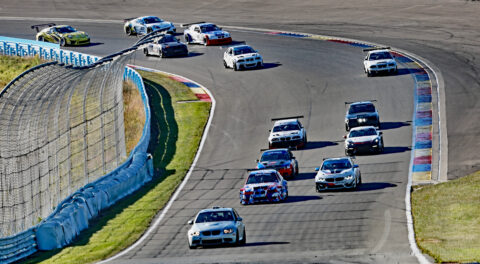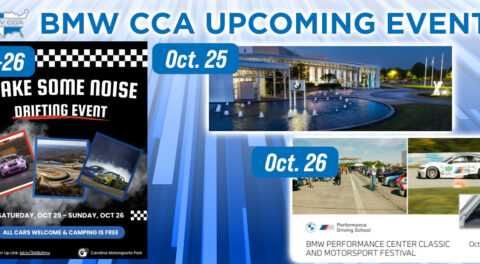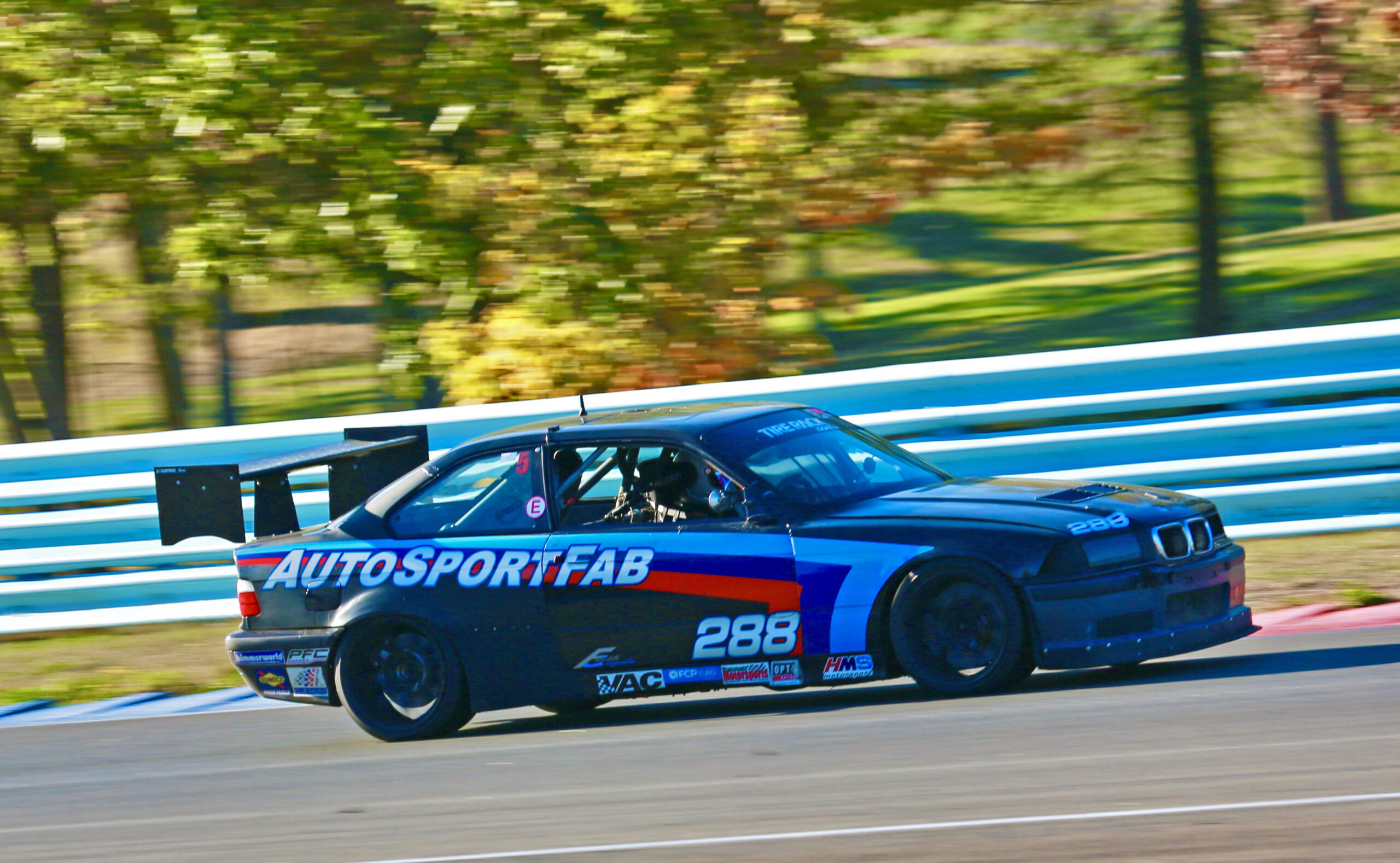The early years of this century were a fantastic time if you were a car enthusiast. Officially, the Rad-era had ended, but what I consider the era of greatness still had a few twilight years before its sunset. Back then, if you were anxiously waiting to come of driving age and you favored cars of the Bavarian variety, you probably had a poster of an E46-generation M3 on your wall. If you favored cars from the Japanese market, it was probably a Subaru WRX STI, no doubt in part to its success in the World Rally Championship. If you were a few years later in life and might be in a position to afford one of these cars, the WRX was much closer to reach than the M3 and, for many, a stepping stone along the way. To that point, I do not want to insinuate that a Subaru WRX is in the same wheelhouse as an E46 M3, but they did share the same space—and perhaps even the same wall space.
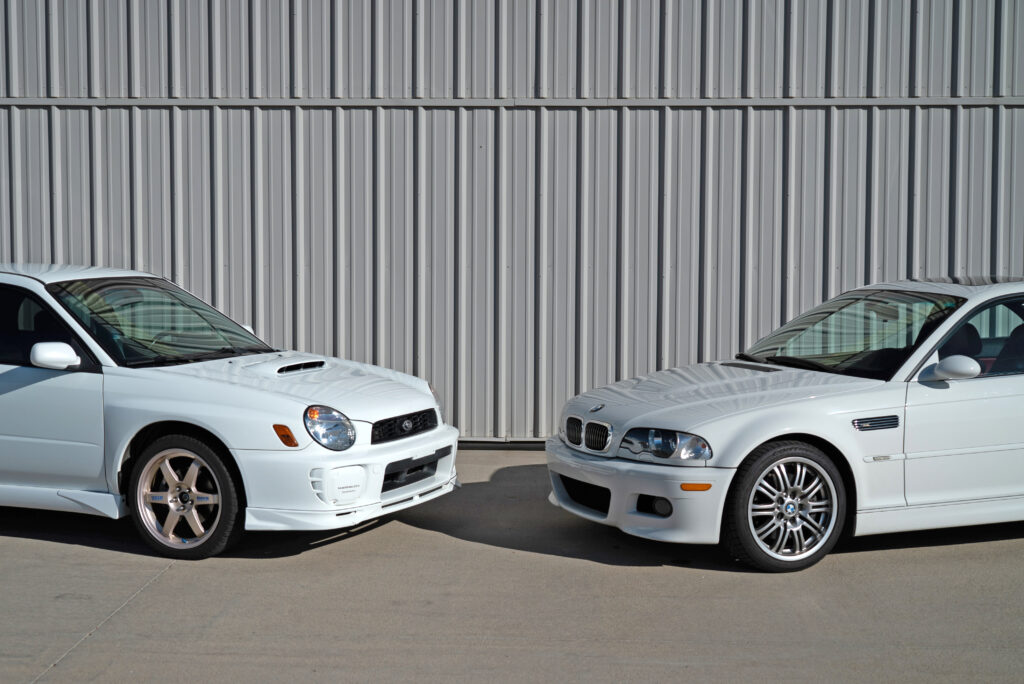
With 20 years of perspective, how do the Subaru WRX and BMW M3 compare today?
Let’s take a closer look at these two examples I currently have at my disposal. They are each one year on either side of the 20-year-old mark, both driver-quality examples, yet they both stand out from the average offering in the current market.
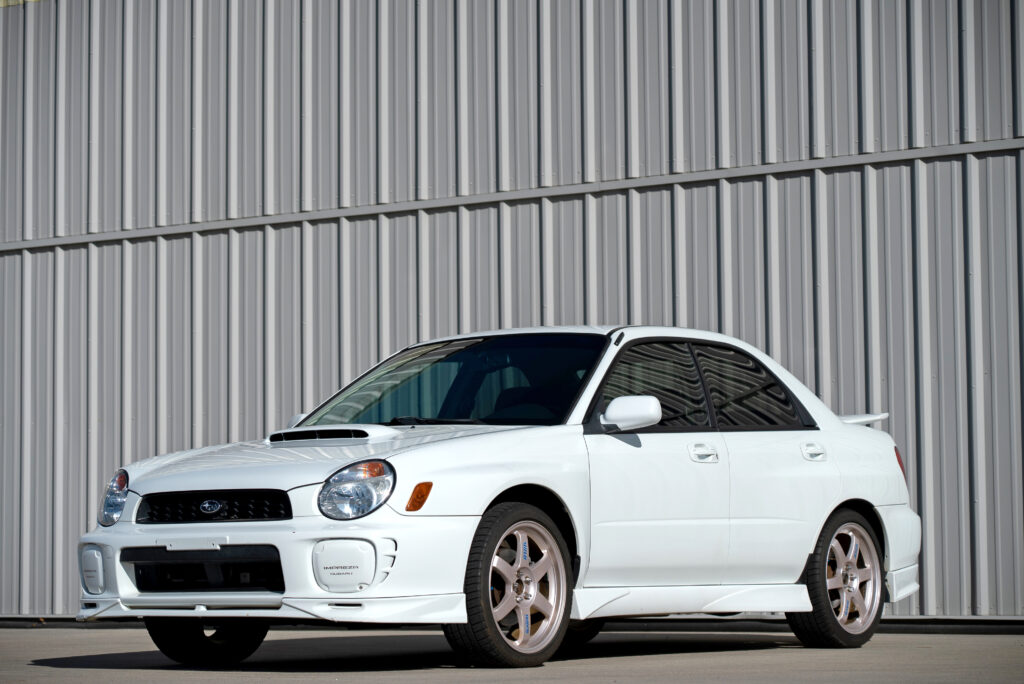
Introduced in 2002, the Subaru WRX was the top-of-line model until the STI was introduced in 2004.
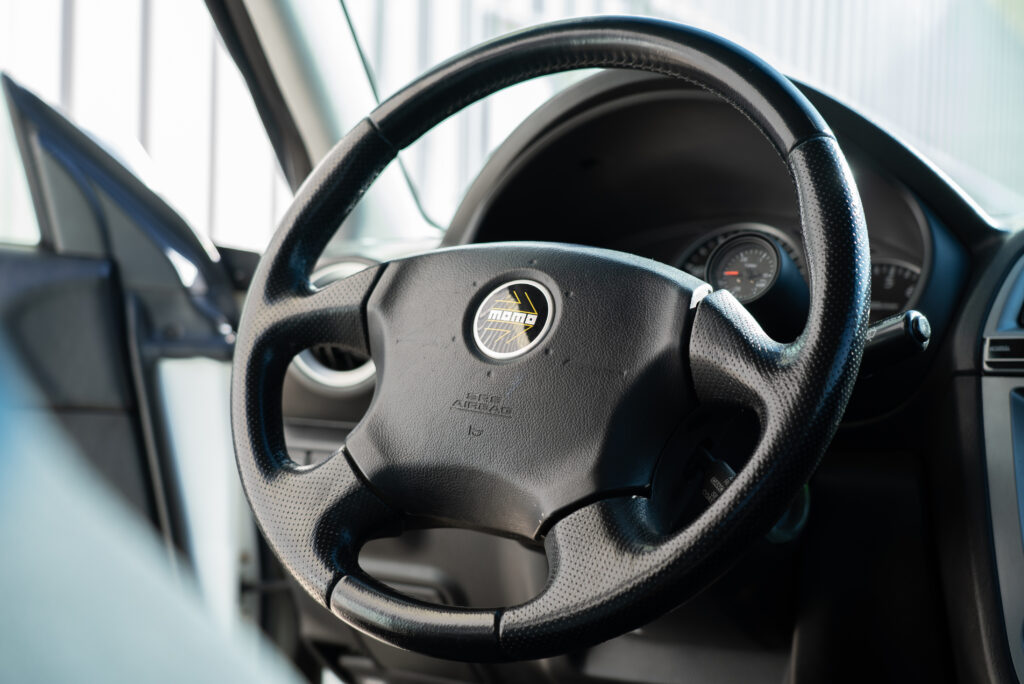
The WRX came from the factory with a Momo steering wheel and cloth-bolstered seats with blue inserts.
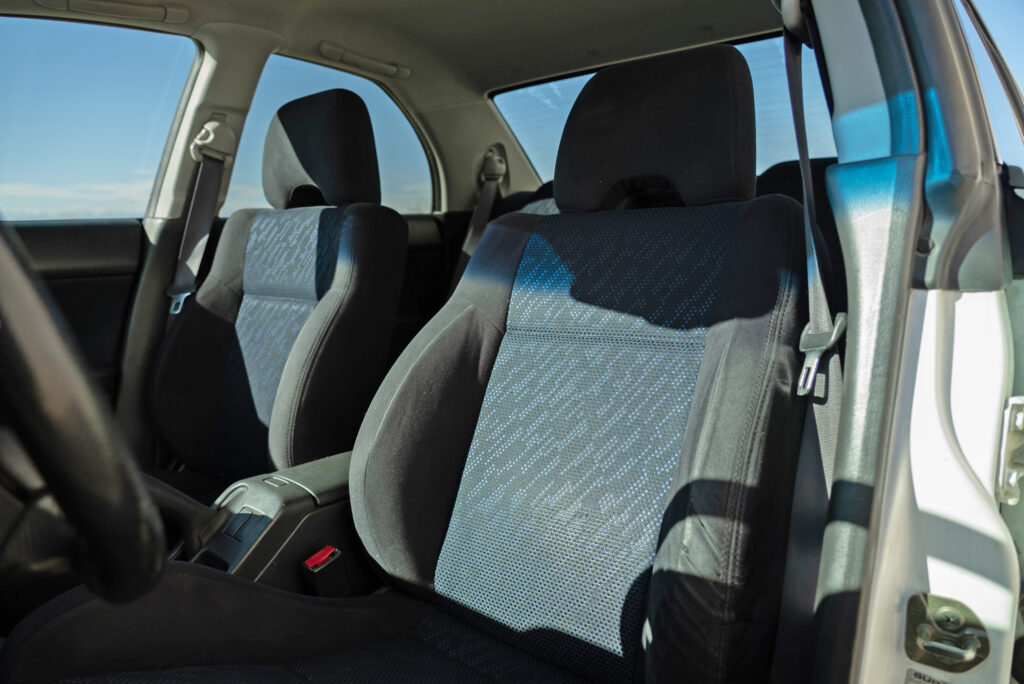
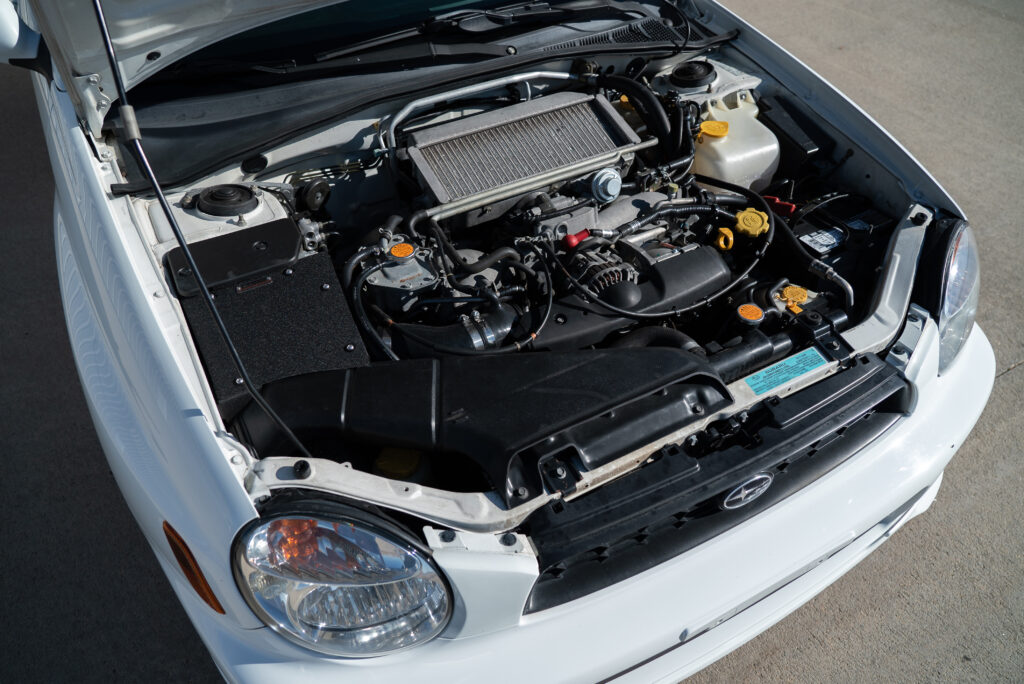
The WRX made its power from a 2.0-liter turbo engine.
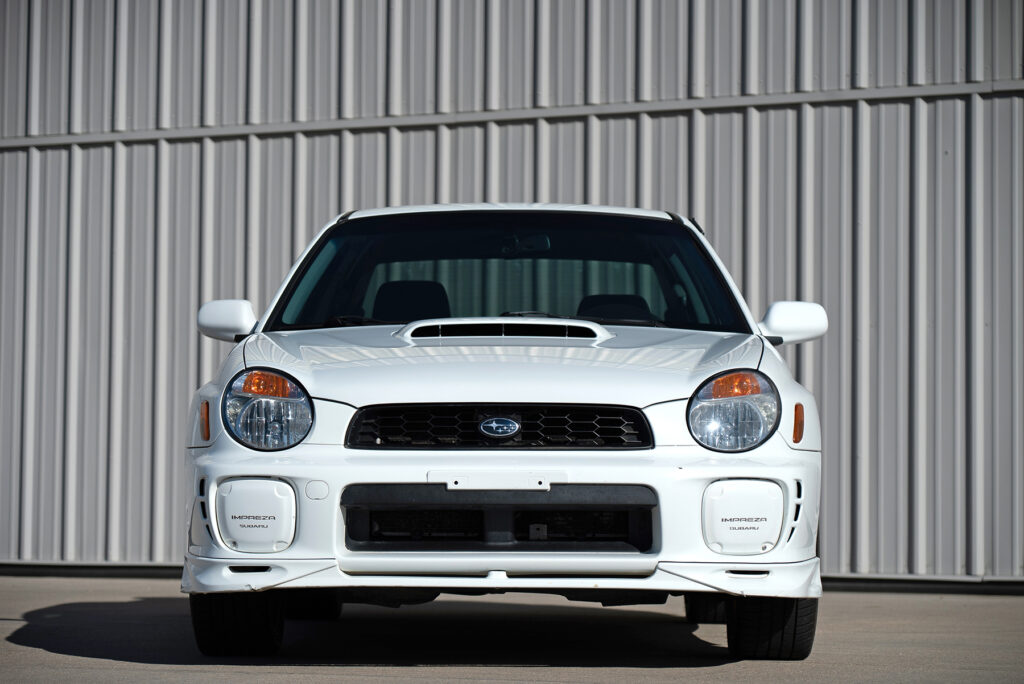
The “bug-eye” headlights only came with the 2002 and 2003 model years.
The Subaru is a 2003 WRX finished in Aspen White over a black cloth interior with blue inserts and a five-speed manual gearbox. Released to the U.S. market one year earlier, 2003 was the last year of the “bug-eye” headlights, a defining feature for WRX fanatics. In 2003, the WRX retailed for roughly $25,000, and with the STI’s release still a year away, it was the highest-spec WRX available on our shores. It offered 227 horsepower from a four-cylinder turbocharged engine that propelled all four wheels from 0 to 60 mph in roughly six seconds. With those numbers, an E46 330Xi is a better comparison—and we just happened to have one of those on hand as well. The 330Xi had similar horsepower, all-wheel drive, and four doors, and it offered significant refinement for an additional cost of $15,000 in 2003 dollars. However, the non-M E46 lacks one important metric outlined in this comparison; it was unlikely to occupy any poster space.
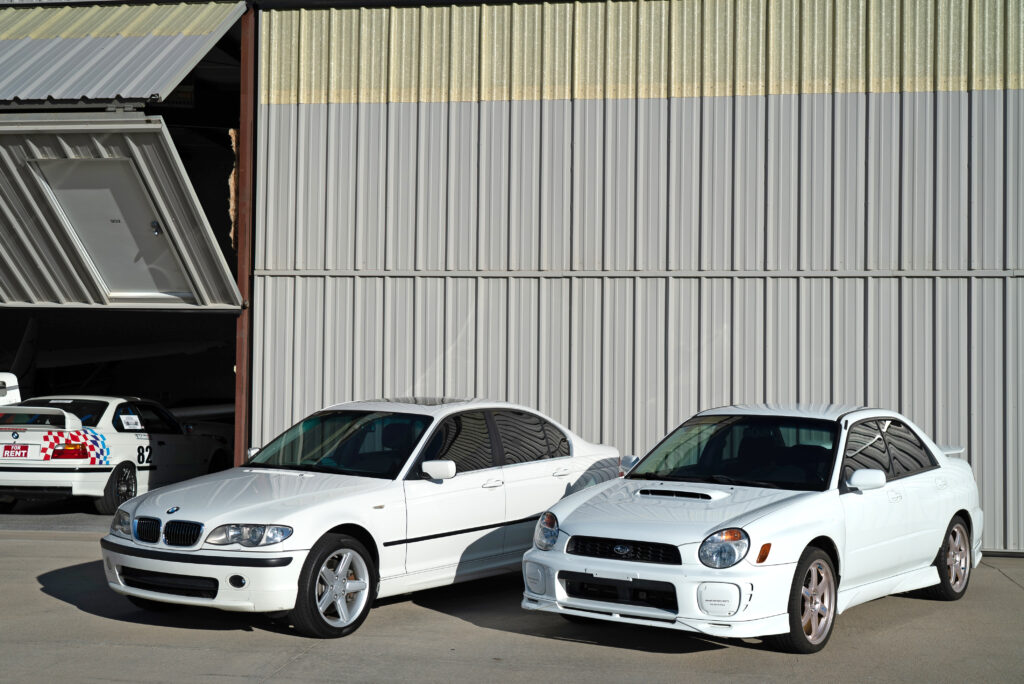
Despite being $15,000 more expensive, the E46 330Xi is a closer comparison vehicle, except for one problem…
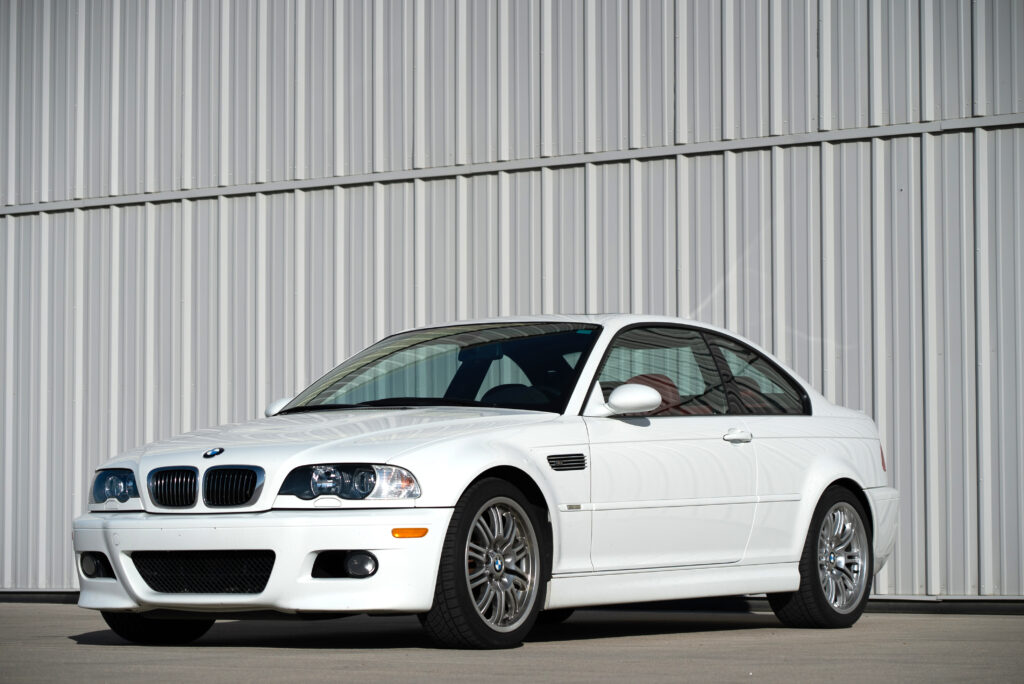
…it didn’t pull at the heartstrings like an M3.
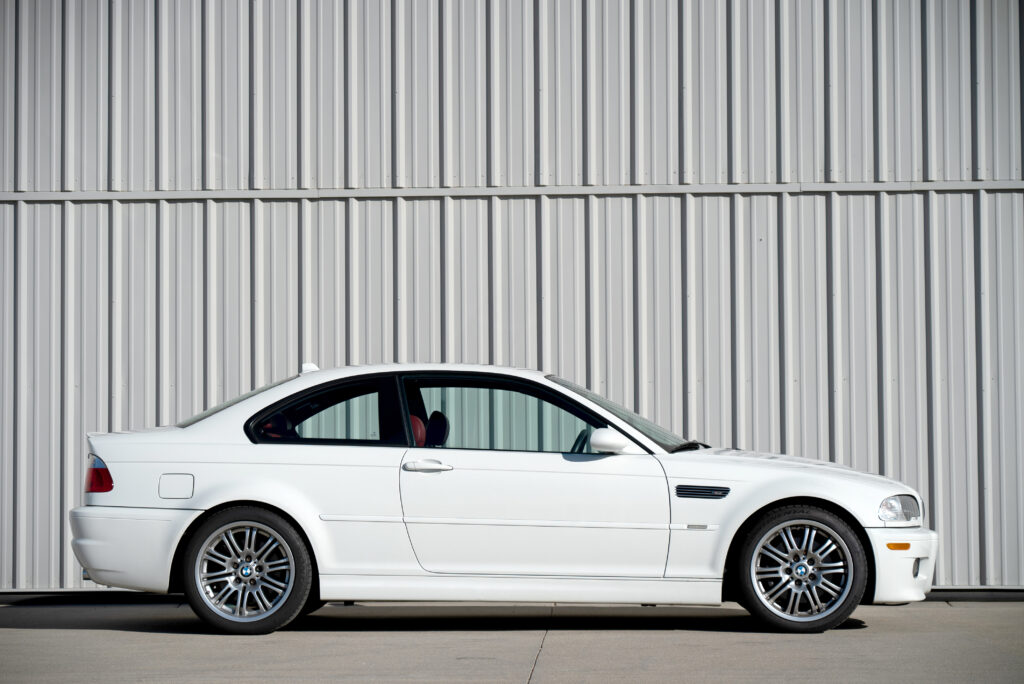
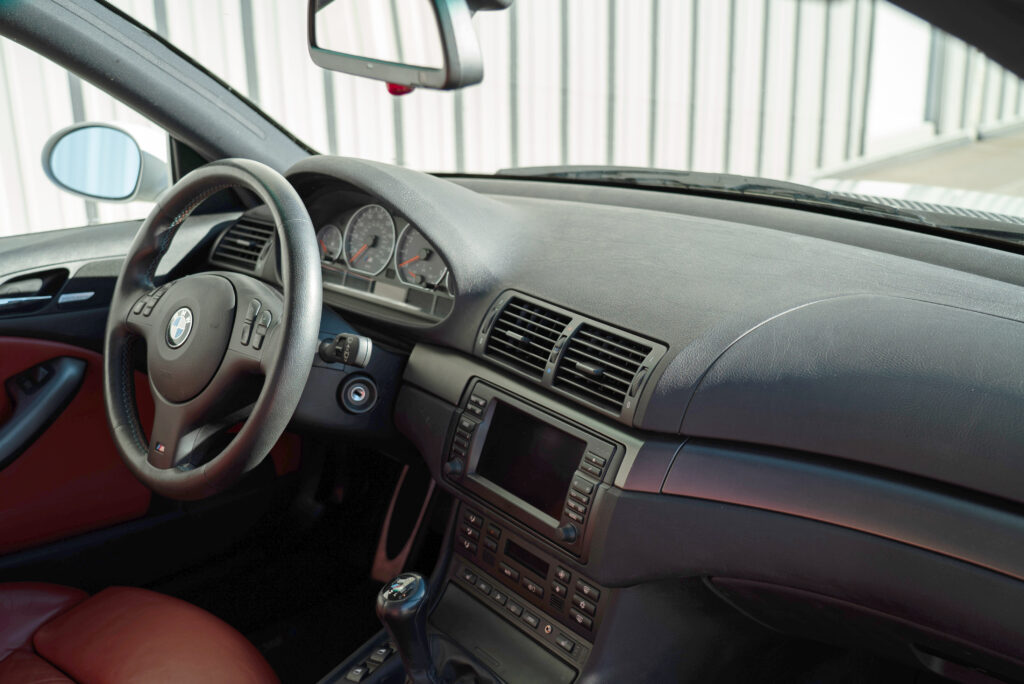
Inside the M3 was as refined as a BMW should be, yet still properly driver-focused.
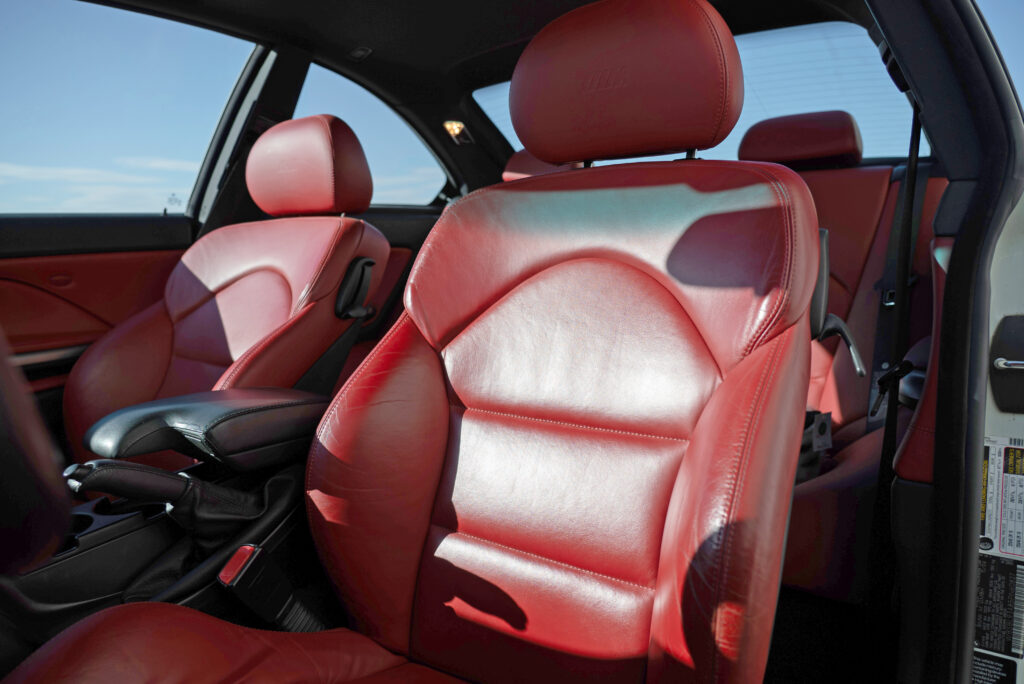
Imola Red was one of the best E46 M3 interior colors.
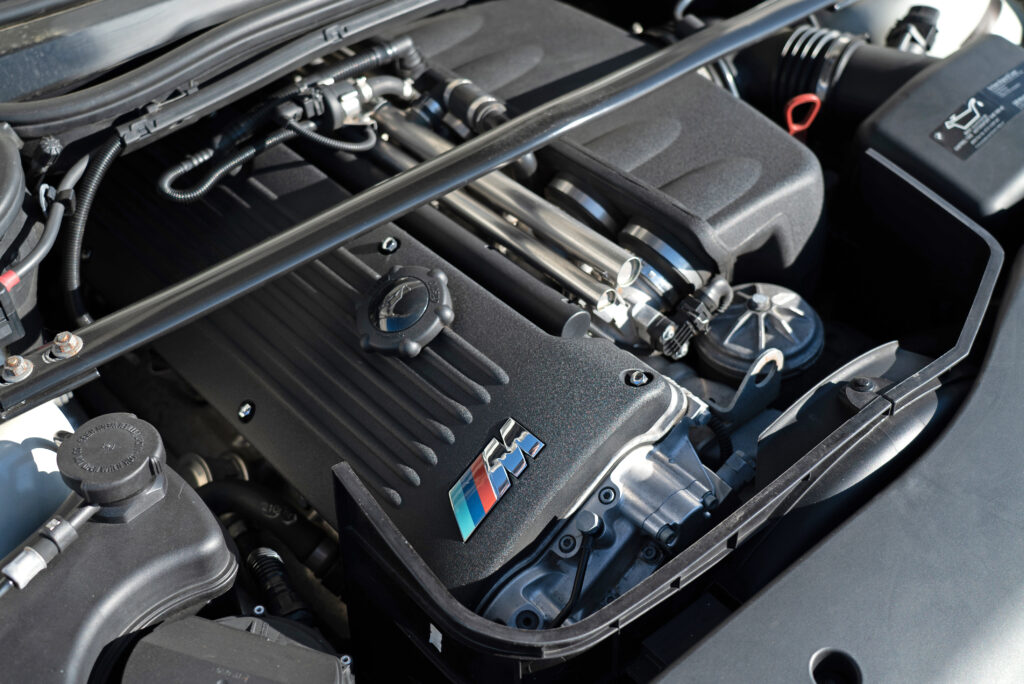
Power came from the 3.2-liter S54B32 engine, one of BMW’s finest powerplants.
The E46 that did occupy that space was the M3. This 2005 M3 is finished in Alpine white over an Imola red leather, with a six-speed manual. It was the second to the last year of E46 M3 production and retailed for roughly $55,000, more than double the price of the WRX. For that, you got one of BMW’s best engines, the 330-horsepower S54B32, which propelled the rear-wheel-drive M3 to 60 mph in 4.5 seconds. Just as the BMW 330Xi is more similar to the WRX, the WRX STI would be the more similar Subaru to the M3. The STI narrowed the horsepower delta with 300 horsepower and closed the 0-60 mph gap by less than a second. A 2005 Subaru WRX STI I sold (and wrote a column about in Roundel) a few years ago would be the perfect comparison car to the M3, but unfortunately, it was crashed shortly after I sold it—a fate that tends to happen to WRXs…
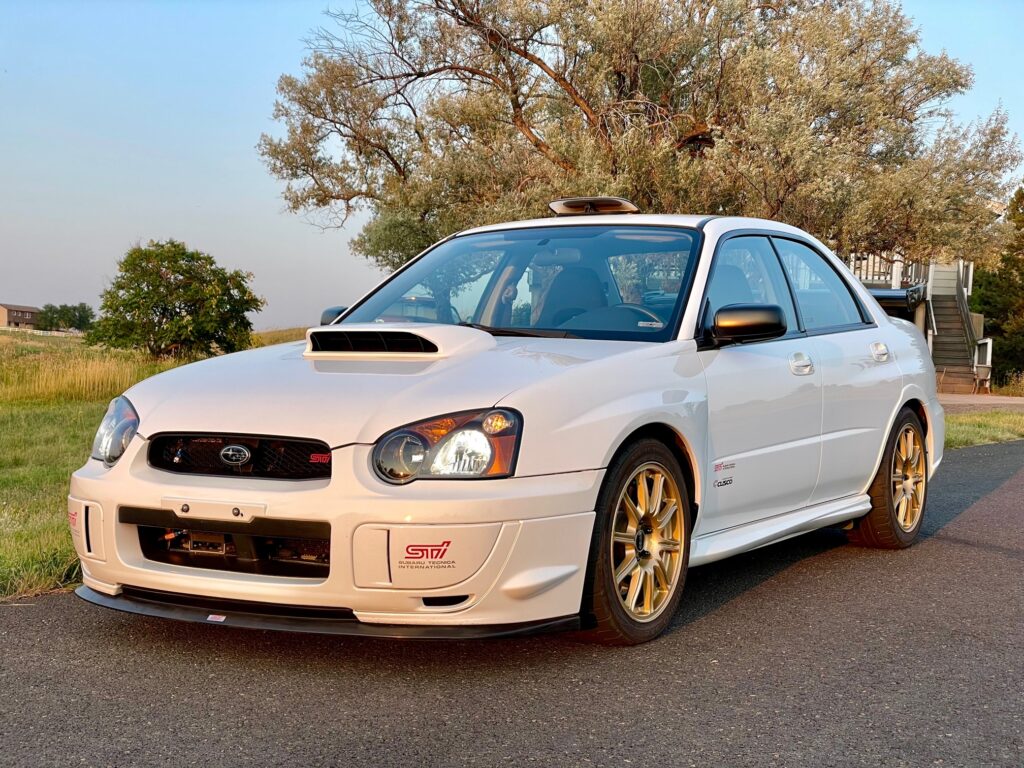
The WRS STI would be a more comparable comparison to the M3, but they have a habit of getting crashed.
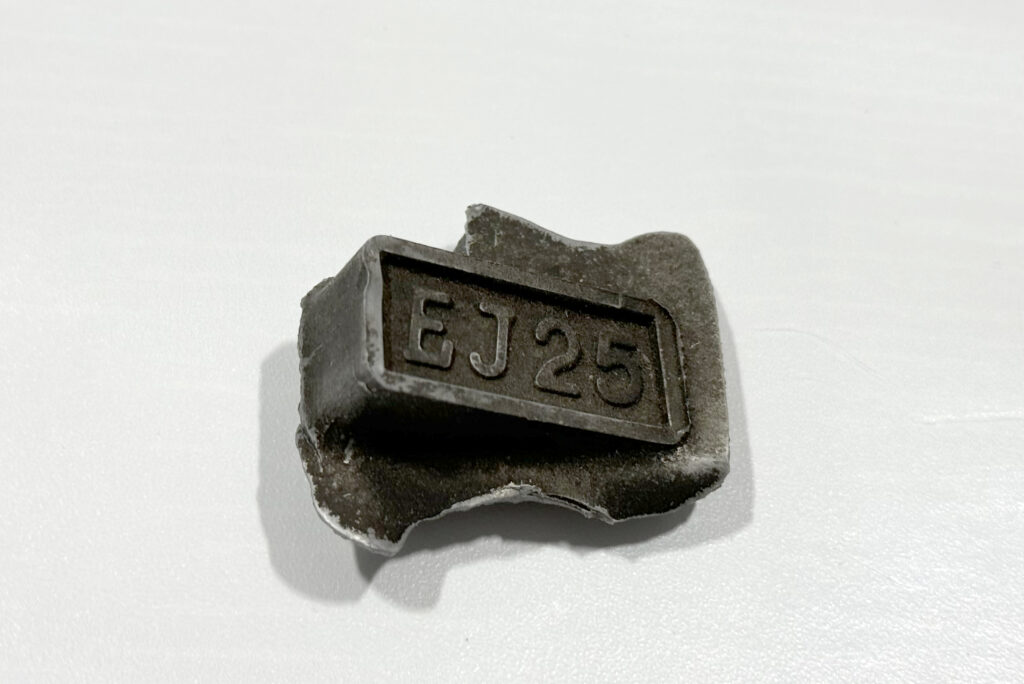
When Subaru engines explode, they are kind enough to preserve their markings.

One of the “big three” s54 items are preventative rod bearing replacement.
So, we’ll have to work with the two examples currently at my disposal. In the present market, the M3 is still roughly double the price of the WRX (call it mid-$30Ks to the WRX’s sub-$20K price point). Despite being a late model year M3 in a rare color combo, the WRX wins the rarity contest because there aren’t many bug-eye WRXs left. That was partly due to many of them being crashed by our younger selves, but also to reliability issues and survivors that have not “survived” well. By the 100K mark, the WRX should have had at least one gearbox overhaul and an engine/turbo service that should include the words “head gaskets” on the receipt. The M3 has been haunted by the “big three,” consisting of rod bearings, VANOS, and potential subframe failure. Forum lore notwithstanding, rod bearings and VANOS are good preventative items to put on the radar by the 100k-mile mark. Still, in the dozens upon dozens of E46 M3s that I’ve sold, I’ve only seen two subframe failures personally.
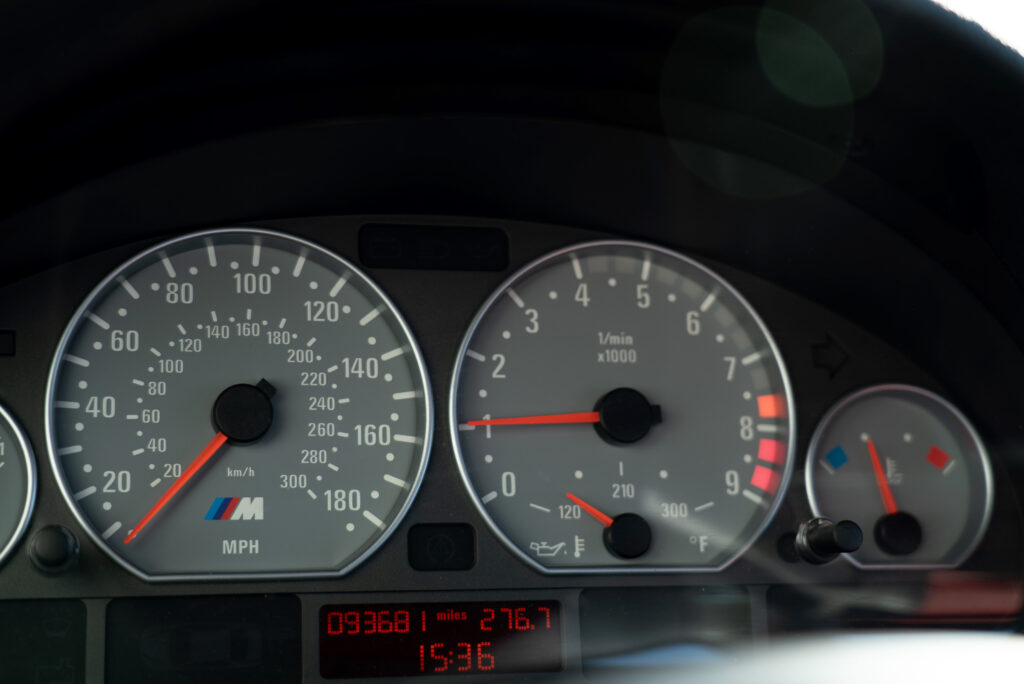
Swinging the BMW M3’s tachometer to 8,000 rpm is a glorious affair.
Out on the open road, the E46 M3 is one of the best BMWs ever made and is by far the superior car. By modern standards, it is still fast while retaining that lovely driver-centric DNA that defined BMW M cars of the period. It will do exactly what you ask of it, without complaint, and costing only smiles in the process. The sound of the naturally aspirated S54 singing to its 8,000 redline is a soundtrack that never gets old—similar to a good early 2000s CD that the in-dash CD player refuses to relinquish no matter how many times you press the eject button. On that topic, window regulars, door handles, and sunroof shades may be less likely to work compared to the Japanese contingent, but of the two, I’d put my money on the M3 to cover more miles over its lifetime. The collector market has also paid attention to the M3, with slow and consistent appreciation that is less susceptible to the ebb and flow of the market swings.
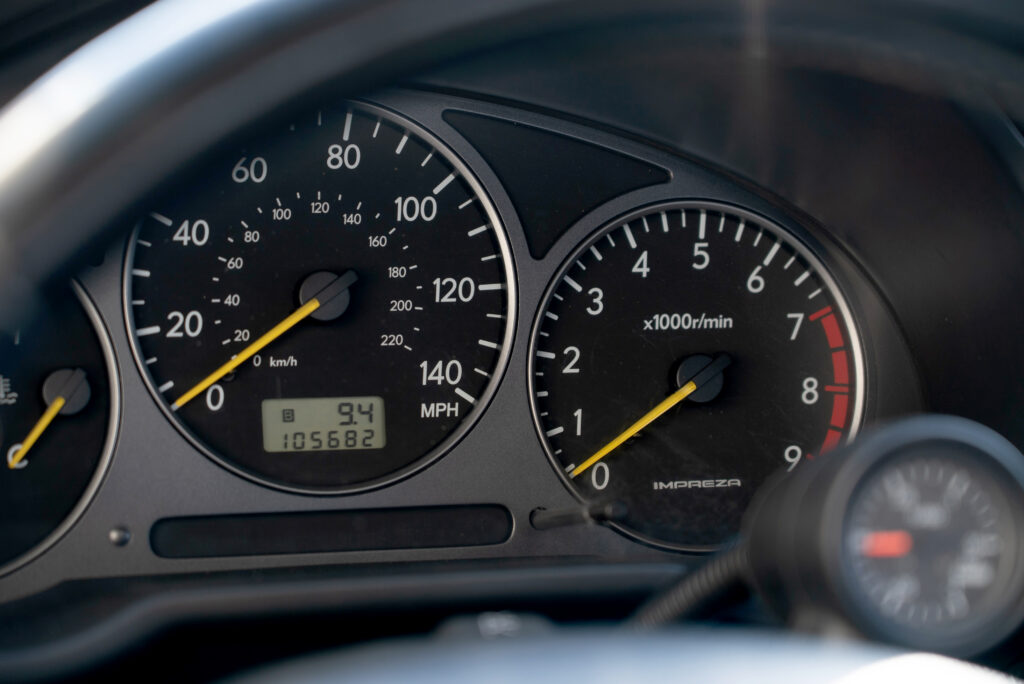
The WRX makes its power much lower in the rev-band thanks to its punchy turbo.
Yet, part of the reason we love these cars is for the experience, and despite the significant performance gap, the WRX is rich in experience. On paper, the WRX is only a few hundred pounds lighter than the M3, but from behind the wheel, it feels significantly lighter. If the M3 sings with a linear torque feel to its 8K redline, the WRX turbo lags, then punches, bringing smiles far before the needle nears the redline. The handling may lack the crispness of the BMW, but if you meter the throttle correctly, understeer is easy to overcome, and the balance is predictable. This becomes extremely useful once the surface grip starts to wane. It’s unlikely an M3 will find its way to the WRX’s natural dirt and snow habitat, but a properly wet track or autocross course could easily level the performance delta between the pair. Dollar for dollar, despite being at a lower price point, an adult-owned and properly serviced WRX like this one will pull a more robust premium over the average example than the M3 will.
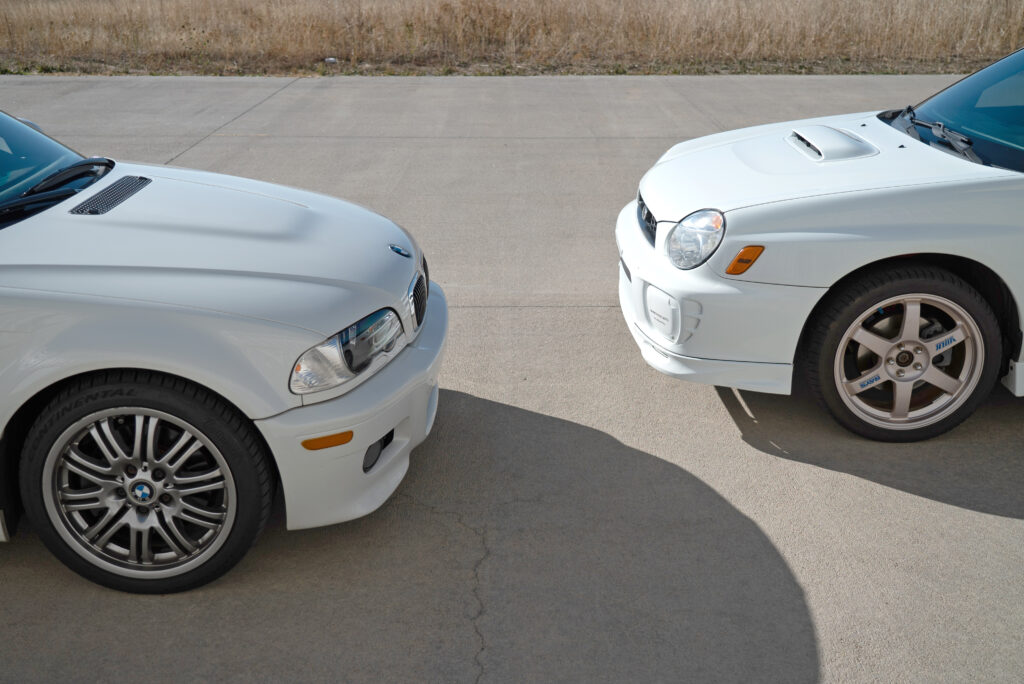
No matter which one you choose, they are both rich with experience.
With twenty years of perspective, it’s easy to appreciate both of these cars. Many enthusiasts found their way to an M3 via a WRX—I can call out a few by name here in the Rocky Mountain BMW CCA chapter. They each served the same mission—to bring us smiles, while also driving us to work—through different means. Each is rich with experience and a stark reminder of just how good we had it back in the early years of this century.—Alex McCulloch Photos: Weston Engstrom

